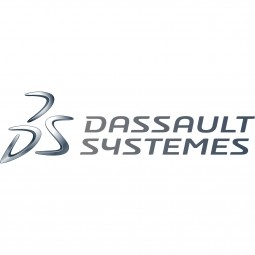适用行业
- 建筑物
- 建筑与基础设施
适用功能
- 产品研发
用例
- 结构健康监测
关于客户
GPNA SRL是一家造船和游艇设计咨询公司,由Griscia Pastacaldi于2018年创立。Pastacaldi曾任意大利海军技术军官,是一位才华横溢的造船设计师和机械工程师。该公司专注于为各种客户创造创新的游艇设计,强调其设计的高质量和Pastacaldi团队的一流技术支持。 GPNA 与外部合作伙伴合作,重视设计团队以及与客户之间的有效沟通以及设计理念和图纸的共享。
挑战
Griscia Pastacaldi是前意大利海军技术军官,也是一位才华横溢的海军建筑师设计师和机械工程师,于2018年创立了GPNA SRL。该公司专注于为各种客户创造创新的游艇设计,强调高品质的设计和一流的设计技术支援。然而,帕斯塔卡尔迪面临着他之前在其他造船设计公司使用的设计工具的挑战。他发现 AutoCAD® 和 MicroStation® 2D 设计软件越来越复杂且不太直观,命令太多,占用了工作区域太多空间。这促使他研究其他对他的新公司来说更高效、更具成本效益的解决方案。
解决方案
Pastacaldi 于 2017 年开始尝试使用达索系统的 DraftSight® 2D 设计软件。尽管最初担心该软件可能过于专业于机械设计/生产,但他发现 DraftSight 直观、用户友好,并提供了工作的广阔视野。区域。他发现,如果一个人能够使用 AutoCAD,他们就可以立即开始使用 DraftSight。在评估了多个系统后,他选择了 DraftSight 2D 设计软件,GPNA 将其与 Rhino® 3D 曲面设计软件配合使用,以创建美观、设计精良且可靠的游艇设计。 DraftSight 软件使 GPNA 能够加速开发、控制成本并发展业务。
运营影响
数量效益

Case Study missing?
Start adding your own!
Register with your work email and create a new case study profile for your business.
相关案例.

Case Study
Energy Saving & Power Monitoring System
Recently a university in Taiwan was experiencing dramatic power usage increases due to its growing number of campus buildings and students. Aiming to analyze their power consumption and increase their power efficiency across 52 buildings, the university wanted to build a power management system utilizing web-based hardware and software. With these goals in mind, they contacted Advantech to help them develop their system and provide them with the means to save energy in the years to come.

Case Study
IoT System for Tunnel Construction
The Zenitaka Corporation ('Zenitaka') has two major business areas: its architectural business focuses on structures such as government buildings, office buildings, and commercial facilities, while its civil engineering business is targeted at structures such as tunnels, bridges and dams. Within these areas, there presented two issues that have always persisted in regard to the construction of mountain tunnels. These issues are 'improving safety" and "reducing energy consumption". Mountain tunnels construction requires a massive amount of electricity. This is because there are many kinds of electrical equipment being used day and night, including construction machinery, construction lighting, and ventilating fan. Despite this, the amount of power consumption is generally not tightly managed. In many cases, the exact amount of power consumption is only ascertained when the bill from the power company becomes available. Sometimes, corporations install demand-monitoring equipment to help curb the maximum power demanded. However, even in these cases, the devices only allow the total volume of power consumption to be ascertained, or they may issue warnings to prevent the contracted volume of power from being exceeded. In order to tackle the issue of reducing power consumption, it was first necessary to obtain an accurate breakdown of how much power was being used in each particular area. In other words, we needed to be able to visualize the amount of power being consumed. Safety, was also not being managed very rigorously. Even now, tunnel construction sites often use a 'name label' system for managing entry into the work site. Specifically, red labels with white reverse sides that bear the workers' names on both sides are displayed at the tunnel work site entrance. The workers themselves then flip the name label to the appropriate side when entering or exiting from the work site to indicate whether or not they are working inside the tunnel at any given time. If a worker forgets to flip his or her name label when entering or exiting from the tunnel, management cannot be performed effectively. In order to tackle the challenges mentioned above, Zenitaka decided to build a system that could improve the safety of tunnel construction as well as reduce the amount of power consumed. In other words, this new system would facilitate a clear picture of which workers were working in each location at the mountain tunnel construction site, as well as which processes were being carried out at those respective locations at any given time. The system would maintain the safety of all workers while also carefully controlling the electrical equipment to reduce unnecessary power consumption. Having decided on the concept, our next concern was whether there existed any kind of robust hardware that would not break down at the construction work site, that could move freely in response to changes in the working environment, and that could accurately detect workers and vehicles using radio frequency identification (RFID). Given that this system would involve many components that were new to Zenitaka, we decided to enlist the cooperation of E.I.Sol Co., Ltd. ('E.I.Sol') as our joint development partner, as they had provided us with a highly practical proposal.

Case Study
Intelligent Building Automation System and Energy Saving Solution
One of the most difficult problems facing the world is conserving energy in buildings. However, it is not easy to have a cost-effective solution to reduce energy usage in a building. One solution for saving energy is to implement an intelligent building automation system (BAS) which can be controlled according to its schedule. In Indonesia a large university with a five floor building and 22 classrooms wanted to save the amount of energy being used.

Case Study
Powering Smart Home Automation solutions with IoT for Energy conservation
Many industry leaders that offer Smart Energy Management products & solutions face challenges including:How to build a scalable platform that can automatically scale-up to on-board ‘n’ number of Smart home devicesData security, solution availability, and reliability are the other critical factors to deal withHow to create a robust common IoT platform that handles any kind of smart devicesHow to enable data management capabilities that would help in intelligent decision-making

Case Study
Splunk Partnership Ties Together Big Data & IoT Services
Splunk was faced with the need to meet emerging customer demands for interfacing IoT projects to its suite of services. The company required an IoT partner that would be able to easily and quickly integrate with its Splunk Enterprise platform, rather than allocating development resources and time to building out an IoT interface and application platform.








